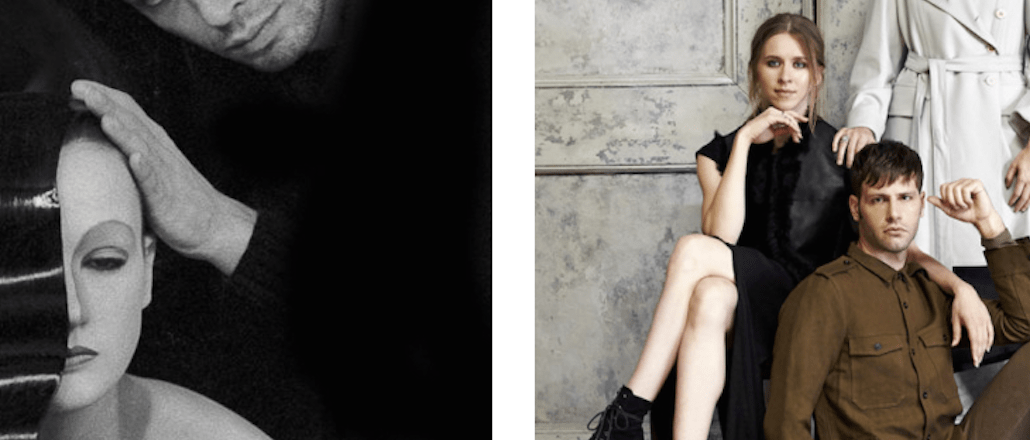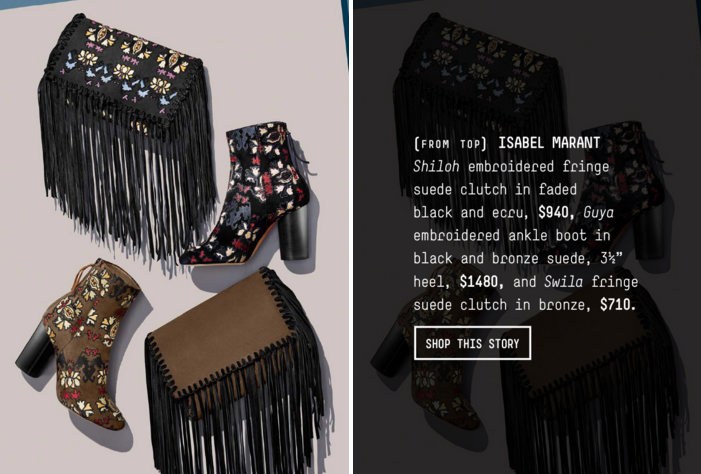Register by Jan 13 to save on passes and connect with marketers from Uber, Bose and more

Barneys New York is beginning to think like a publisher. Its online content blog, The Window, launched this year both as a full print magazine and as a standalone mobile app.
“We’ve built out our editorial properties in order to focus on storytelling as the primary relationship-building tool for our brand,” said Barneys executive vp of digital Matthew Woolsey during a panel at the Decoded Fashion Summit in New York. “Our customers engage with our editorial content to understand the decisions we make as a brand.”
The Window launched online in 2011 as Barneys’ own website for fashion, beauty, home and menswear content. Photo spreads, interviews with designers and style tips dominate the feed, with top-trending articles including “How To Dress Well: Seasonal Styling Tips For The Barneys Man” and “Sweater Weather Is Here and It’s Glorious.” It’s currently led by editorial director Marissa Rosenblum, a former shopping and market director at Refinery29. The content, for the most part, is written by the in-house editorial team, made up of five writers.
All editorial features, which are added about once a day, are shoppable, and all the content is exclusive to Barneys, which Woolsey said helps build “brand affinity,” even if it doesn’t drive sales.
“We’re always thinking of ways to get content that’s not elsewhere by asking what ourselves what our customers want from our brand,” he said. “It sounds basic, but what they expect from Barneys is different than what they expect from Amazon.”
Woolsey added that the Barneys customers who read The Window are the store’s highest value customers, so the company wanted to reach them wherever they were, hence the mobile app, launched in September. The app, which is separate from the main Barneys mobile app, features scrollable photos of new and featured product collections; when a photo is tapped, product information pops up including the brand and price. One tap on the ‘Shop this story’ button takes users to Barney’s mobile-optimized Web page where they can select a size and check out (a one-step process for logged-in customers).

Nitin Mangtani, CEO and founder of mobile commerce platform PredictSpring, said that brands should be building mobile experiences for their most engaged consumers, even if most overall consumers don’t download the apps at all.
“If the top 40 percent of your users want that connection, then brands should want their own destination. You don’t want to be a blip on some broader catch-all mobile shopping platform,” said Mangtani.
He added that while making a sale is the eventual goal, mobile should be bigger than that.
“Mobile is the first device that can truly bridge the online and in-store since it lives in people’s pockets,” said Mangtani. “It should be a container for your brand’s content, the avenue that delivers it.”
For Barneys, asking customers to download an app exclusively geared for content depends heavily on their willingness to engage, but Woolsey is confident that Barneys’ content is valuable, even if it doesn’t drive immediate sales.

“From a business standpoint, when we look at editorial we’re looking at engagement. We aren’t trying to come up with merchandised lists based on a business area that had a tough week,” he said. “The more we can focus on the story from the Barneys’ point of view, the more people will feel engaged, and over time they’ll make more purchases. We see that in our analytics.”
A video interview with a designer, for example, doesn’t generate “30 quick sales,” but it’s about the world they’re creating rather than clear conversion. That’s why the company also invested in turning The Window into a print magazine, one dotted with fashion photographers like Christian MacDonald, and writers like Christopher Petkanas, who has clips from publications like W magazine — to maintain a luxe appeal outside of mobile.
“We know we can’t be all things to all people, but we feel that we can be both inspirational and tactile,” said Woolsey.
More in Marketing

‘The year where the dust settles’: Digiday editors share 2026 predictions
Between generative AI pilot projects and emerging agency hold co models, 2026 will be the year that signals turn into strategy.

Virality is no longer just a vibe at MrBeast’s Beast Industries
MrBeast is hiring a head of viral marketing. Marketers would be wise to pay attention.

‘This is what the future will look like’: Accenture Song has moved upstream of advertising
Accenture Song has outgrown the agency business without becoming an agency.





